Wednesday February 24, 2021
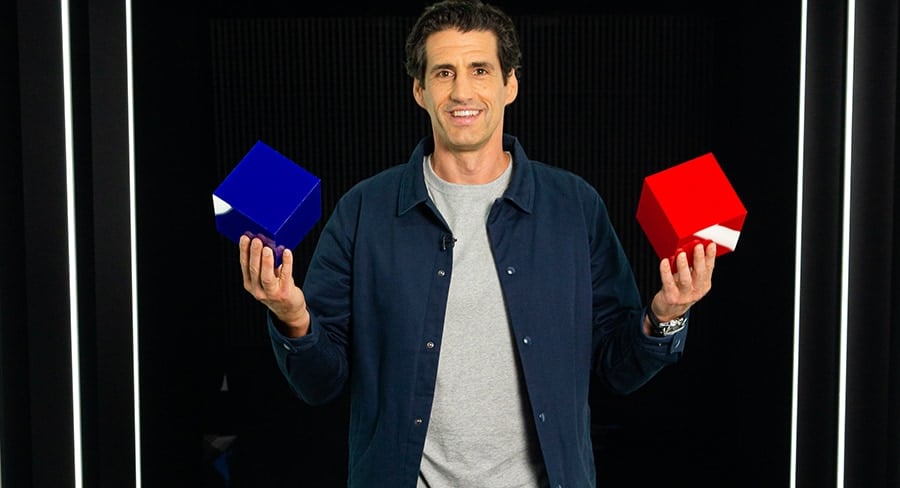
The Cube: Andy Lee hosts and produces Australia’s persplexing new game show
The Cube Australia is the nation’s newest game show and it has a simple premise – you don’t have to cook or sing. You just have to hold your nerve.
Hosted by Andy Lee (who also produces) the show challenges everyday Aussies to complete a few simple games while confined to a Perspex cube, with limited time and a whopping $250,000 up for grabs.
The format comes from the British series The Million Pound Cube (known as The Cube from 2009–2015), which has run for 10 seasons and 85 episodes.
Mediaweek caught up with Lee and talked about what drew him to the show, production during Covid-19 and how The Cube is different from other game shows.
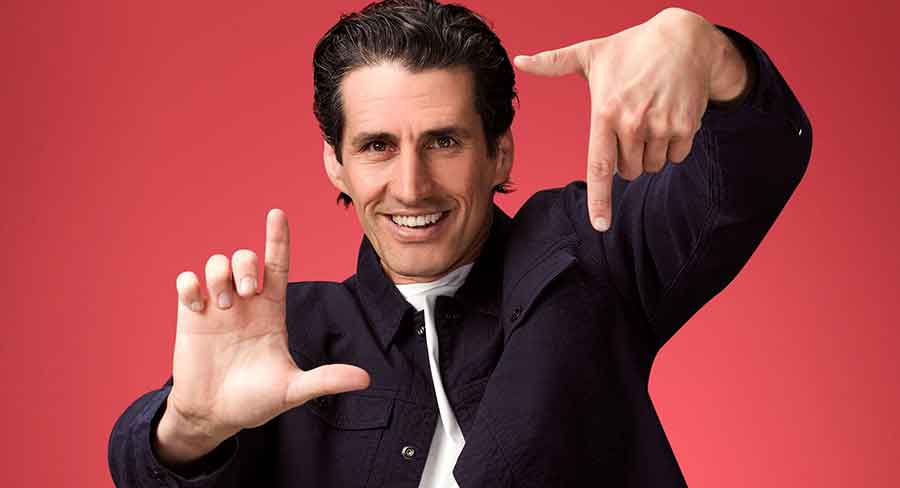
Lee said that he first came across the format when filming Hamish and Andy’s Gap Year with Hamish Blake.
“Hamish and I had seen the Chinese version when filming Gap Year Asia and back then we loved it. If you can enjoy the show without knowing what they are saying, then there is something in the format.
“Hopefully as a host I can bring something extra to the show, but if not then I encourage everyone to turn the audio down and enjoy the show.”
Lee said that he has always loved skill games and watching how people react when under pressure, which this show has in spades.
“They are all simple doable tasks, but they have to be done cleanly. The Navy Seals have a saying ‘slowly smooth, and smooth is fast’ and I think that is really true of the show. The people who remain composed and are clear and precise are generally the ones who go the furthest.”
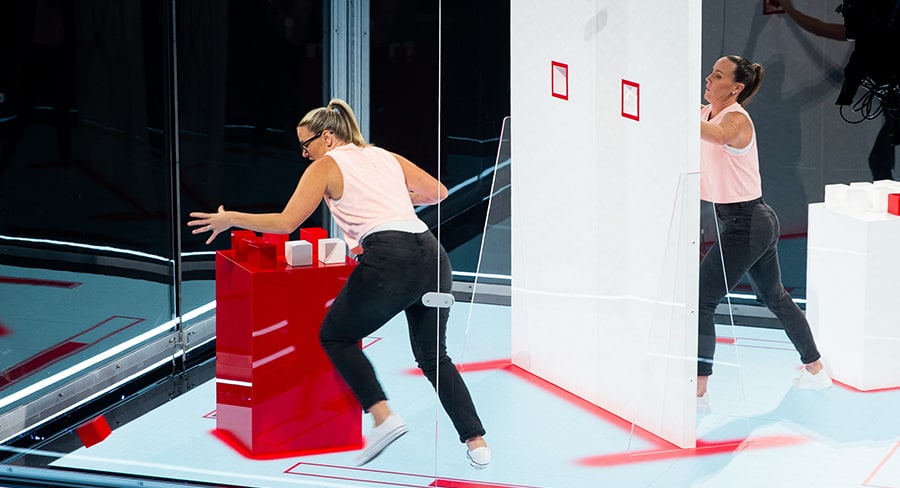
One thing that separates The Cube from some Australian game shows is that it is in primetime and Lee said that while other game shows might only need six cameras for its production, The Cube used 140.
“We associate game shows with that 5 pm slot and Wheel of Fortune and Sale of the Century and stuff like that. Australia doesn’t have many game shows that don’t do trivia, wordplay, or games of chance and this is all about skill and has a lot more action.”
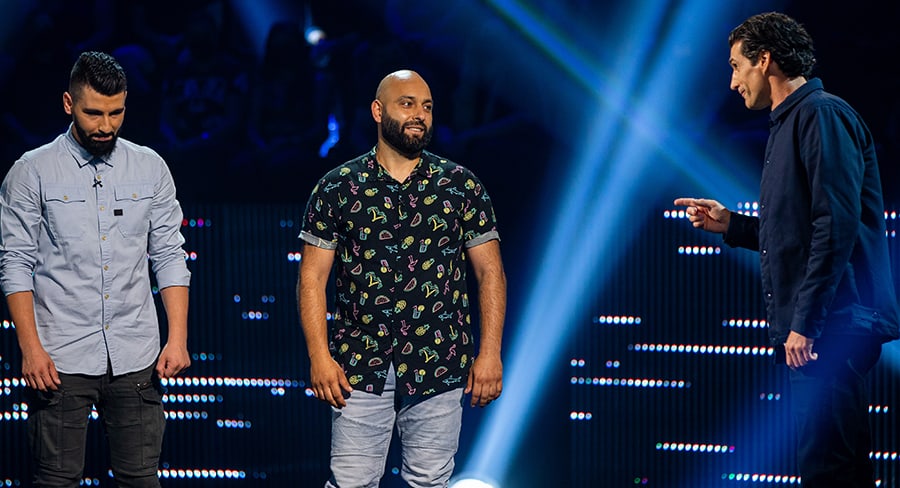
Andy Lee hosting 10’s The Cube
The main theme of the show’s marketing campaign has been that it features simple tasks that anyone can do and Lee said that this was the main appeal of the show.
“You don’t have to be fit, anyone can sit on the couch at home and say ‘I can do that’ and they are probably right. The show requires catching, throwing, balance, a steady hand and there is also a lot of perception games which is interesting.
“We play these games every time we turn the light off and we try to mauver ourselves to the bed without hitting our shins on the base. Those types of games around the house are on steroids because you are in a perspex cube with a live audience and $250,000 up to win.”
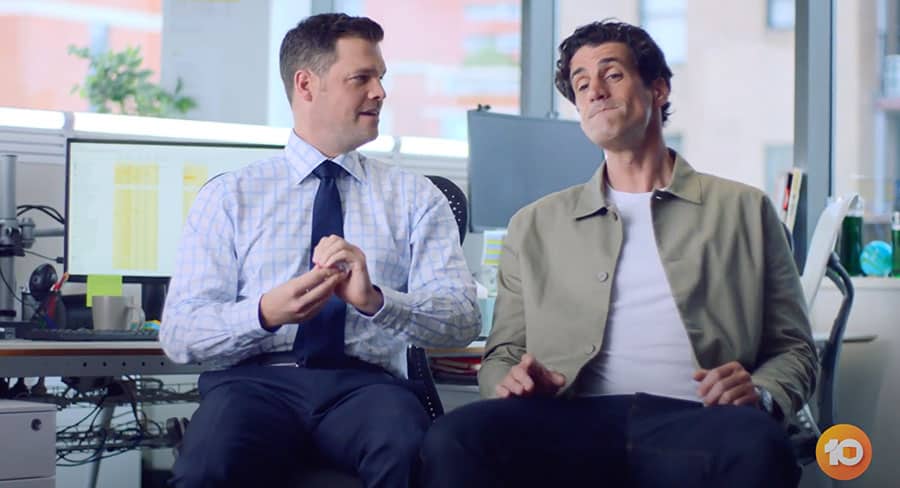
The show is produced by ITV Studios Australia who Lee said along with 10 have been super collaborative, and that one of the appeals to the job was contributing as a producer.
“I just love all the behind-the-scenes stuff almost as much as performing in it. When they asked me to do this show, I said if there was an opportunity to produce and learn more then I would love to do that as well.
“I have not done any arena spectaculars before, so I certainly learned more than I was offering to the production but it was also a good chance to put my tone across the show.”

Lee admits the show came at an appropriate time because he was separated from his contestants by perspex glass just like most cafes these days, but he found the morale factor to be the hardest part of the production.
“The audience were all in masks, so you don’t get to see as much raucous laughter from them as you would normally. And I love hanging out with crews and having banter with them, there are about 110 people working on the show and it was a shame that I couldn’t see those smiling faces.
“We were allowed a beer after production ended and we were all sitting backstage on different tables and people would drop their masks to have a beer and I would be like ‘oh my gosh that’s what they look like!’.”
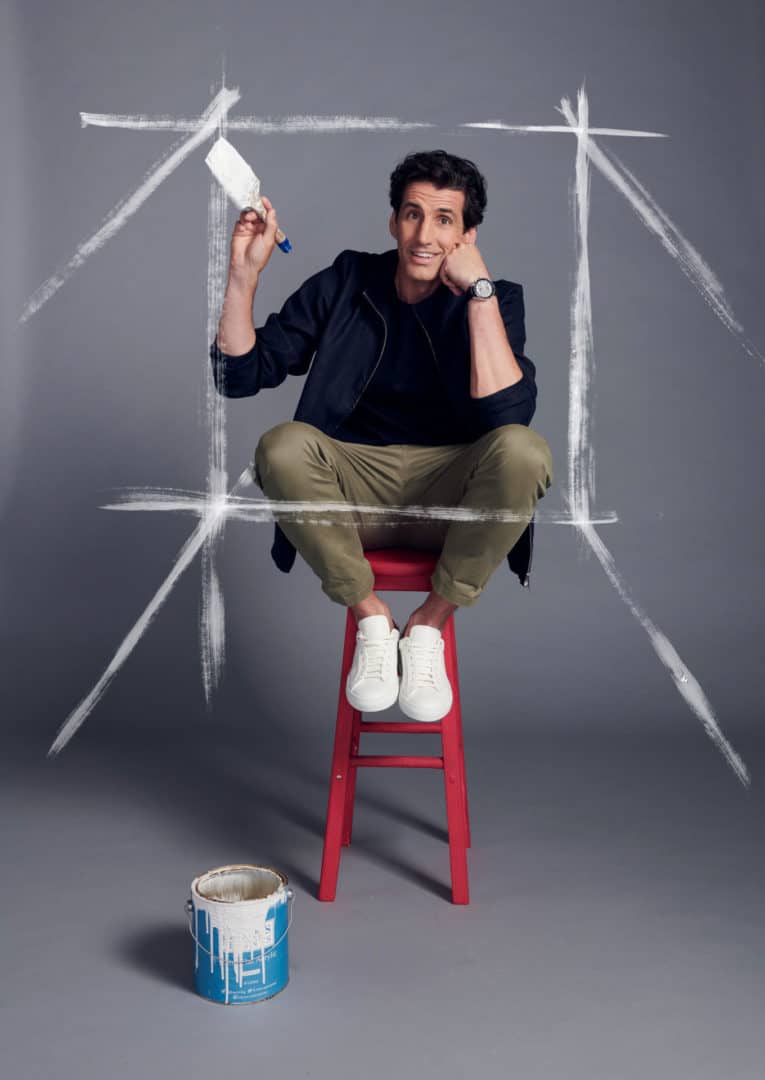
Lee said that hopefully, one thing that the UK and Australian versions both have in common is that they are both a long-running success, but he added the most different thing might be the hosts.
“In the UK, Phillip Schofield is so amazing, but he plays up the drama and keeps the intensity front of mind, for me there is plenty of drama in there but when the money was lower I was happy to muck around. When the stakes got higher I started to panic as well. I didn’t want to make too many jokes when there was a lot of money on the line. This version probably ebbs and flows more than the original.”
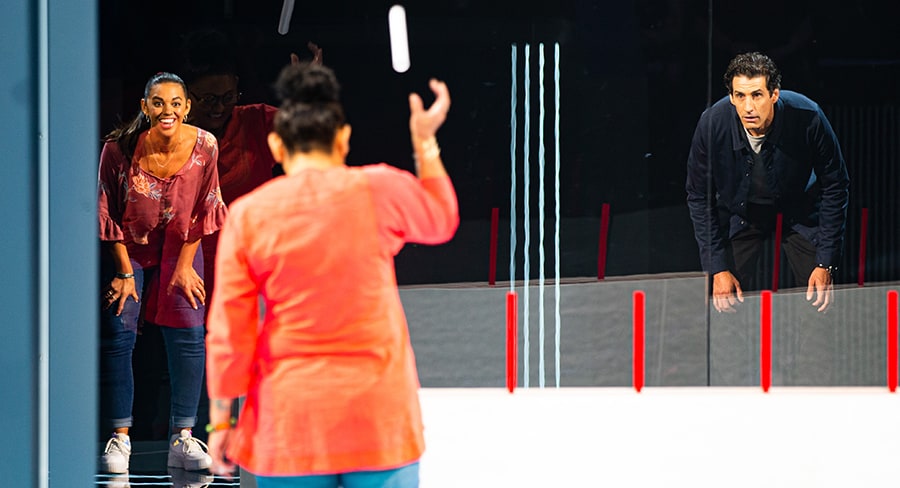
While the UK version has had prize money as high as £1m, Lee said that the Australian show has room to grow and $250,000 is a great starting point.
“Needing to take the game up a notch in the future would be a great problem to have, who knows, depending on inflation contestants might be playing for one bitcoin.”
The Cube Australia premiers on 10 on February 24 at 7:30 pm.
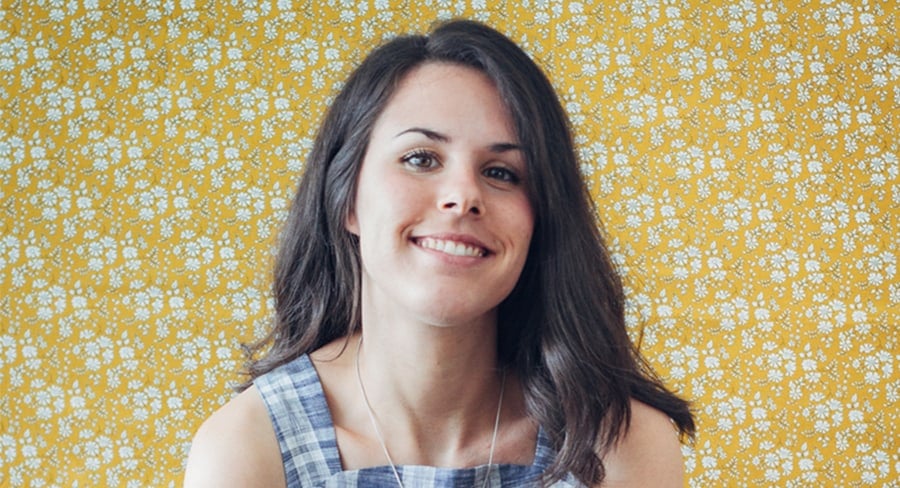
frankie editor Sophie Kalagas on how the magazine got to 100 issues
Since sending its first issue to print 17 years ago, frankie magazine has worked to shine a light on Australian and New Zealand creatives. Last week, the publication celebrated the release of its 100th issue.
Mediaweek spoke to frankie editor, Sophie Kalagas, about what it took to bring the issue together, and what the future holds for frankie.
With so many publications run entirely online these days, what do you think it is that keeps readers coming back to the physical copies of frankie?
People still enjoy the experience of flipping through a magazine, as long as it is thoughtfully and carefully curated. Readers are looking for relatable, engaging content they can sit back and sink their teeth into, all bound up with beautiful design – it becomes a real physical experience where they make a cup of tea or pour some wine, pick up a frankie and enjoy some time out. We also have extra features tucked inside our print copies: tear-out posters, art cards, wall planners, and in our bumper issues, special one-off items like bookmarks, collage sets and other DIY activities. While our digital offerings are always growing and expanding, our print magazine remains a consistent treat for frankie readers.
How much planning goes into creating a milestone issue like the 100th?
It definitely started quite early! The cover especially required a lot of consideration – we really wanted it to feel celebratory and do the past 17 years of the brand justice. We came up with concepts for special print features a few months out from going on sale, giving us plenty of time to get them right. Plus, there were special one-off executions to add to the party vibe: we created a video featuring messages from frankie friends and contributors past and present, which is accessible via a QR code in the magazine, and a big raffle with prizes up for grabs from a whole host of local makers.
frankie has really unique cover art compared to a lot of other publications. How do you find artists for your cover images?
We know frankie’s covers are a large part of the magazine’s appeal, so a lot of thought is put into their selection each issue. Some covers are commissioned or even created in-house (like the graphic designs for issues 96 and 97), while others feature artworks we’ve discovered in our online travels. We’ve always got our eyes peeled for fresh talents and interesting new styles, which is how we came across April’s Baker, the cake-maker behind our 100th cover. As a ‘birthday’ issue, we knew we wanted to create a design with icing, so when we stumbled across her playful but precise work, we were excited to collaborate. The artist, Roxy Mankoo, had never produced a flat ‘icing artwork’ before, so our designers worked closely with her to bring the design to life. We’re thrilled with the outcome!
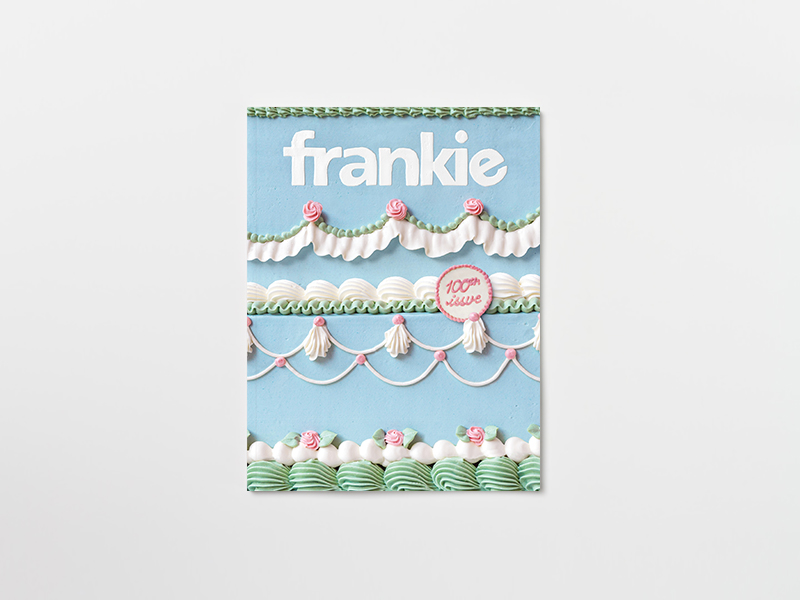
frankie has seen a lot in its 17 years, but a global pandemic was not something anybody saw coming. How much has COVID-19 impacted your content over the past year?
There were the obvious hurdles we had to jump – not being able to do in-person shoots during lockdowns, especially. We had to come up with creative ways to get around this, like producing a fully illustrated fashion feature in the style of vintage paper dolls, and getting subjects to take self-portraits with polaroid cameras. It was actually an interesting challenge – it forced us to think outside the box, and produce some content I’m very proud of. As for the editorial, we tried not to focus too much on the pandemic, as people were getting enough of that elsewhere. On the whole, we kept stories uplifting and a pleasant distraction, while also touching on mental health-related topics and providing some solidarity and support.
Do you have any articles or interviews that you’re particularly proud of that have been published during your time as editor?
There are so many! We’ve created some incredible visual features, like out-of-the-box fashion shoots and wonderful illustrated guides to life skills. I’ve loved bringing in our vox pop-style articles where readers and frankie friends share their insights into a particular topic or issue – one that stands out was titled “What I Wish You Knew About My Chronic Illness”. There have been plenty of memorable interviews that broaden our minds and understanding of the world, like the Indigenous history-focused archaeologist in issue 100, and the Dutch physician who created a safe space for women to receive medical abortions – 20 kilometres out to sea. Of course, there’s lots of lighter content that I’m super-proud of, too. A sassy sense of humour is a big part of frankie’s identity, and I love that we can bring stories to our readers that make them laugh, cry and recognise themselves all at once.
100 issues is a huge milestone, what’s next for frankie?
Hopefully another 100! We’ll continue to grow and develop both our print and digital offerings, and surprise and delight our readers along the way. We’re aiming to branch out even more into different online platforms, with a particular focus on podcasting.
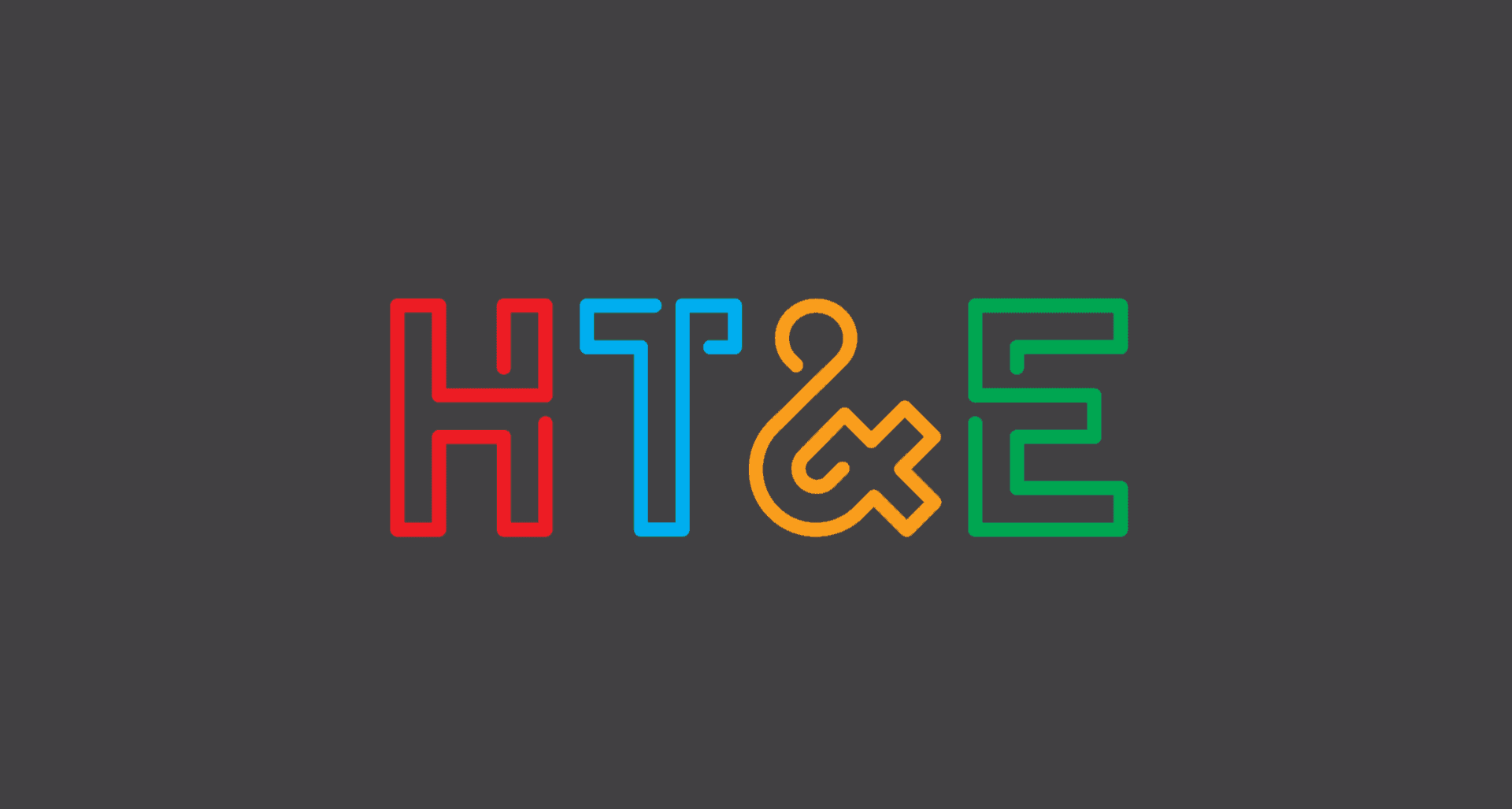
HT&E full year results – after 22% revenue drop, recovery as radio market improves
HT&E revenue down 22% full year – $252.7m to $193.7m YOY
Net profit after tax down from $38.5m to $18.5m
Costs down $30.3m (16%) YOY
ARN radio revenue down from $208.4m to $165.1m YOY
ARN digital and other revenue down from $14.9m to $10.2m YOY
HT&E has released its results for the 12 months ending 31 December 2020.
The company has reported it has emerged from 2020 a stronger business by strengthening its core radio operations, investing in digital audio growth, and maintaining balance sheet strength with net cash of $112 million.
ARN claims to be the #1 metropolitan radio network in Australia reaching a record 5.3 million listeners a week and continuing to win commercial share that has seen the radio group exceed market performance each quarter in 2020.
During the year ARN saw strong growth in digital listening with +19% increase in iHeartRadio registered users, and also launched the iHeartRadio Podcast Network which is now the biggest podcast publisher in the country with over 16 million downloads a month.
HT&E chairman Hamish McLennan said, “HT&E navigated the period well and has maintained its strategic focus during the year, strengthening our core Australian radio operations, further investing in digital audio, as well as building further balance sheet strength, providing optionality in a consolidating market.
“ARN remains the best performing audio company in Australia, both commercially and in ratings, delivering advertisers integrated, unique and engaging content from some of the world’s best talent across radio, music streaming and podcasting.
“HT&E’s investment in oOh!media is already delivering value for shareholders, as we paid $18.1 million for a 4.7% stake at the height of the pandemic in the first half, and at year end it was valued at more than double our initial investment.
“Our investment in Soprano has the potential to provide significant value beyond current book value and is non-core to the company’s strategy. We have appointed Macquarie Capital to explore options to maximise our 25% shareholding.”
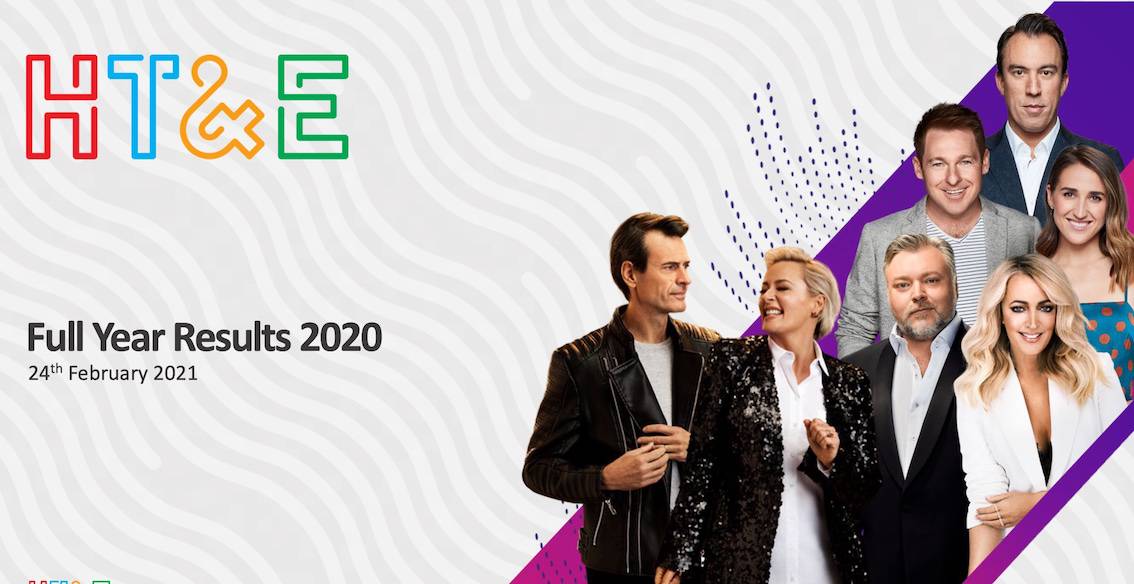
HT&E CEO & managing director Ciaran Davis said, “Despite the extraordinary disruption to our business due to the pandemic, ARN maintained its position as the #1 metropolitan network in Australia, and continued to take commercial market share. We are building momentum in our digital audio transformation as extraordinary growth of digital listening saw a 14% growth in iHeartRadio app downlands, and a 19% growth in registered users to 1.9m.
“What we achieved in 2020 demonstrates HT&E’s leadership in the Australian audio market. In a year that has rewritten history, Australian audiences have made ARN and iHeartRadio podcast brands the number one choice for audio content, delivering consistency and certainty for our commercial clients. I am confident that the momentum that we have built will continue in 2021 as we focus on creating the leading audio entertainment business in Australia.
“Coming out of the pandemic we are in an excellent position to drive shareholder value. We have protected earnings and cash reserves providing a very strong balance sheet and maximum optionality regarding our growth opportunities.”
Australian Radio Network highlights
Growth in total listening across COVID-19, with ARN commercial radio now reaching 5.3 million people weekly from breakfast to drive
Streaming of ARN radio stations experienced an increase of 14% in total listening
KIIS 1065’s Kyle & Jackie O continue to dominate Sydney breakfast radio, finishing the year where they started at #1FM
GOLD 104.3 in Melbourne now established as the clear #1FM, along with The Christian O’Connell Breakfast Show
ARN #1 podcast publisher in the country after iHeartRadio Podcast Network Australia launched in February 2020
Podcast downloads reaching new listening highs, increasing by 124%
ARN trading outlook
Q1 revenue outlook continues to strengthen with current pacing for March indicating total revenues could finish flat on prior year. Revenue for January finished back 6.9% with pacing improving on this result for February, assisted by continued improvements in broadcast radio performance and growth across our digital assets.
ARN is encouraged by early briefing activity for April and Q2 campaigns.
Subject to the advertising market recovery continuing, ARN anticipates total people and operating costs to be in line with 2019.
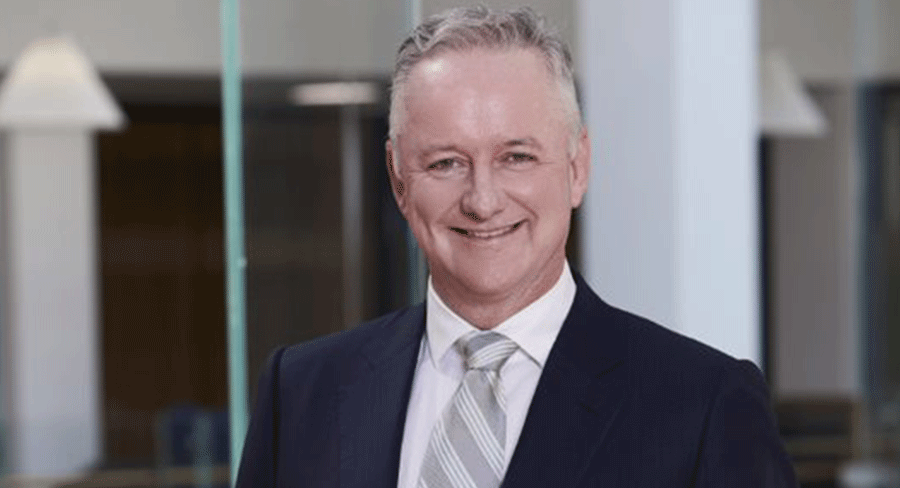
Hugh Marks delivers his final Nine Entertainment results: Revenue steady as profit surges
Nine Entertainment group revenue down 2% half year Jul-Dec 2020 v 2019 – $1,182.5m to $1,162.8m
Net profit after tax up from $114.3m to $186.9m
Group costs down $124m (13%)
Broadcast costs down 71.2m (15%)
Rough Diamond’s Bump becomes Stan’s most successful show ever
Nine Entertainment Co has released its H1 FY21 results for the six months to December 2020. For the half, Nine reported revenue of $1.2b and a net profit of $182m, which included a post-tax specific item expense of $5m.
Half year highlights include:
Continued audience strength across all key platforms
Marked improvement in ad markets through Q2, with strong growth in BVOD and FTA
Continued growth from subscription businesses
$23m EBITDA improvement at Stan
26% growth in digital subscription and licensing revenue from publishing
Hugh Marks, outgoing chief executive officer of Nine Entertainment Co, said during his final results presentation: “Our business has performed incredibly well through this period of heightened volatility, and has come out the other side in a very strong operating position.
“We acted swiftly when circumstances changed, whilst continuing to embrace opportunity and remain true to our vision – of building Australia’s leading cross-platform media business.
“In these latest six months, the combined contribution from Stan and 9Now, and the digital components of Domain and Publishing grew by 53% to more than $140m, and, notwithstanding the strong recovery in earnings from our traditional markets, equated to 41% of our total EBITDA.
“From an advertising perspective, this latest half year was a tale of two quarters. The advertising market clearly turned in late September, earlier and more sharply than we had anticipated, and this was led by Television, both free to air and BVOD. The brand-building strength of these segments underpinned clear growth in market share overall for the television industry, that has continued into the first quarter of 2021. Nine’s consistently strong audience performance, across all of our platforms, means we are well positioned to benefit from this improvement in the ad cycle.
“The lessons we have learned from COVID are clear. Our focus on strict cost efficiency at our traditional media assets delivered the profitability we were targeting. And continued investment in our digital businesses is delivering strong digital profit growth. Together, enabling us to continue to migrate the business to a more flexible, digital-base.
“Moreover, the accelerated growth in businesses like Stan and 9Now, as well as our digital publishing mastheads, has enabled us to bring forward our longer term plans. And importantly has enhanced our competitive position across all segments. This will enable us to continue to invest in our audiences to ensure continued growth into the future.
“I’ve had a great five years at Nine, and am confident that I am handing over the reins at the perfect time – of a business which is clearly firing on all cylinders, but that has plenty of scope to accelerate its profitability in the coming few years.”
Television
For tatings season 2020, Nine was the #1 Network and Primary Channel in all key demographics. Nine attracted a commercial network share of 37.5% of the 25-54 demographic, 4.7 points ahead of its nearest competitor. On a primary channel basis, Nine’s share of the 25-54s was 38.3%, and 6.1 share points ahead of its nearest competitor. In the December half, Nine also won all of the key demographics.
FTA costs declined by 16%, or ~$70m. There were both cyclical and structural elements to the cost decline, which was partially offset by a close to $10m increase in revenue-related costs, given the stronger market.
The BVOD market grew by 44% for the half to $123m3, with both quarters showing clear growth (+41% in Q1 and 48% in Q2). 9Now recorded revenue growth of 30%, equating to share of ~45%.
Radio
The radio market generally had a difficult six months, with the advertising recovery lagging that of television. The metro radio ad market declined by 19% across the six months – Nine’s gross ad revenues declining by a similar quantum, with growth in agency share being offset by a softer performance in direct. First half costs declined by 18% or $9m, reflecting ongoing cost out, and restructuring initiatives. Nine Radio reported EBITDA of $3m, for the half.
Since Nine’s major format changes through the first half of calendar 2020, audiences have grown across all core talk stations. Recent changes in sales structures, coupled with this audience growth, are expected to underpin leverage as the ad market improves.
Publishing
Nine’s Publishing division includes the core Metro Media business as well as nine.com.au, Pedestrian Group and Drive. Together, Publishing reported revenue of $263m, (-9% on pcp) and EBITDA of $68m, up 27% on pcp.
Audiences across mastheads strongly increased over the half, with readership across The Sydney Morning Herald, The Age and the Financial Review up 22%, 24% and 25% respectively.
This translated into paying audience, with ~ 26% growth in digital subscription and licensing revenue. This strong growth in digital subscriptions reflects the structural trend of audiences paying for quality journalism, and an accelerating transition towards a business model focussed on recurring, digital reader revenue.
Offsetting, print retail sales declined 18%, with sharp reductions particularly from the hotel, airport and CBD segments.
Digital advertising revenue grew marginally in the first half, with growth in mastheads, nine.com.au and Pedestrian. Print advertising remained soft however, with the leading travel and luxury goods categories being hard hit by lockdowns.
Overall, Publishing costs were down by 17%. Of the almost $40m reduction, around half related to production and distribution, driven both by reduced print volumes and our new printing arrangements. While COVID-related timing issues account for more than half the cost out in this period, incremental initiatives through calendar 2021 and 2022 will more than offset, with the previous outlined target of a c$30m maintainable net cost out (from 2019) remaining intact.
In total, Publishing EBITDA increased by 27% to ~$68m for the half.
Stan
During the half, Stan consolidated on the subscriber gains of FY20, with the strong summer period resulting in current active subscribers of 2.3m. Across the half, Stan sourced content from 18 different distributors. Particularly popular were Sky Original Gangs of London, the Bryan Cranston series Your Honour (CBS Showtime), the reboot of Saved By The Bell (NBC Universal), the hit new UK drama series It’s a Sin (All3 Media), Clarice (MGM) and Stan Originals A Sunburnt Christmas and more recently Bump, which was released on January 1 and has quickly become Stan’s most successful show of all time. Across the half, total streams increased by almost 20%.
The higher subscriber base going into this half, coupled with the September price increase (premium plan subscribers from $17 to $19) underpinned the reported 28% growth in revenues. Costs increased by 10% (split fairly equally by content and marketing), resulting in an EBITDA more than doubling to $37m.
The strong subscriber growth of the past 12 months has enabled Stan to expedite previous growth ambitions. During the half, Stan announced a long-term content deal with NBCU, the launch of Stan Sports as well as an increased commitment to Stan Originals. Already, Stan has a strong market position and significant EBITDA and cash profitability. There remains substantial upside in both subscribers and profitability for Stan on a longer-term basis.
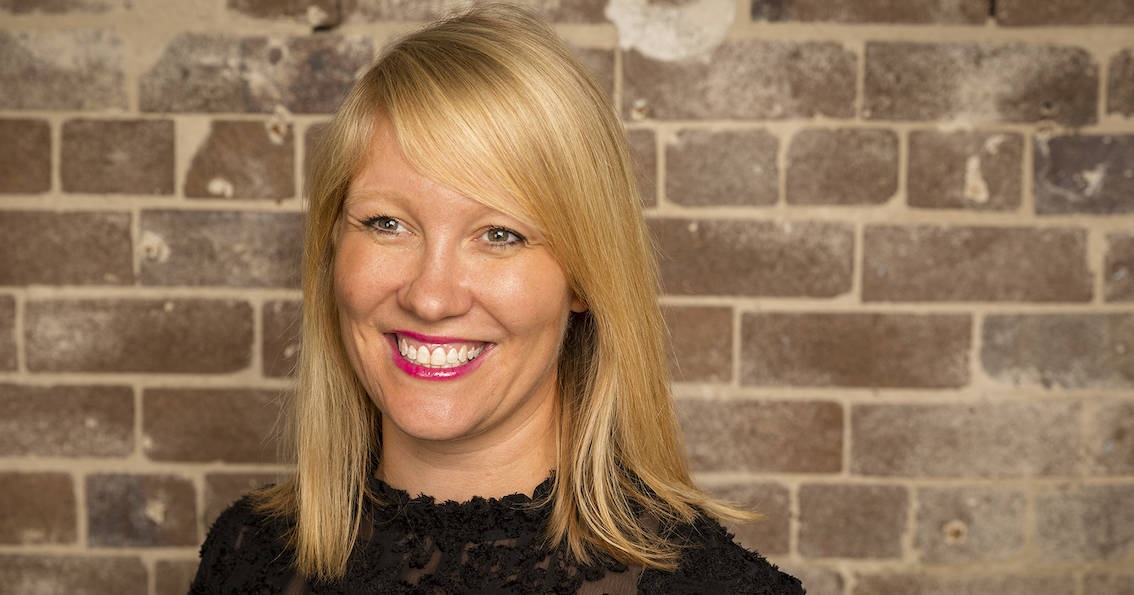
Foxtel appoints new group publicity boss, taking over from Jamie Campbell
Foxtel Group’s new chief customer, marketing and revenue officer Hilary Perchard has moved to appoint a new executive who will take over some of the responsibilities previously handled by Jamie Campbell who left the subscription TV and streaming business late in 2020. (Perchard is a recent arrival at Foxtel, moving across this month from Activision Blizzard, a global interactive entertainment company, where he was chief revenue officer.)
See also: Publicity bombshell: Jamieson Campbell about to leave the Foxtel building
Campbell’s role at Foxtel was group director of publicity and talent relations. The new position is group director, content communications. Taking on this new title is Jacqui Abbott (pictured). She joins Foxtel from Pulse, the award-winning brand marketing agency within Ogilvy PR and a part of WPP AUNZ, where Abbott was managing director. She has spent the past six years leading the agency with a team of more than 30 and has represented major consumer brands including Netflix, Tourism Australia, Xbox, Microsoft, Audible, Coca-Cola, eBay, KFC and IKEA.
Abbott will have responsibility for the publicity and events team across Foxtel, Fox Sports, Kayo and Binge, along with the Foxtel magazine and the Insiders digital content platform. Perchard said: “The new title reflects that the way people are learning about and now engaging with our content, and publicity has new opportunities to collaborate and innovate as part of the way we go to market.”
Originally joining Pulse in early 2015 to lead the Netflix account, Abbott helped launch that service into Australia and then delivered numerous major brand campaigns, announcements and film and TV releases over the past six years. She was previously head of public affairs and social media at Virgin Australia and before that at Optus.
Abbott joins Foxtel on Monday, March 29.
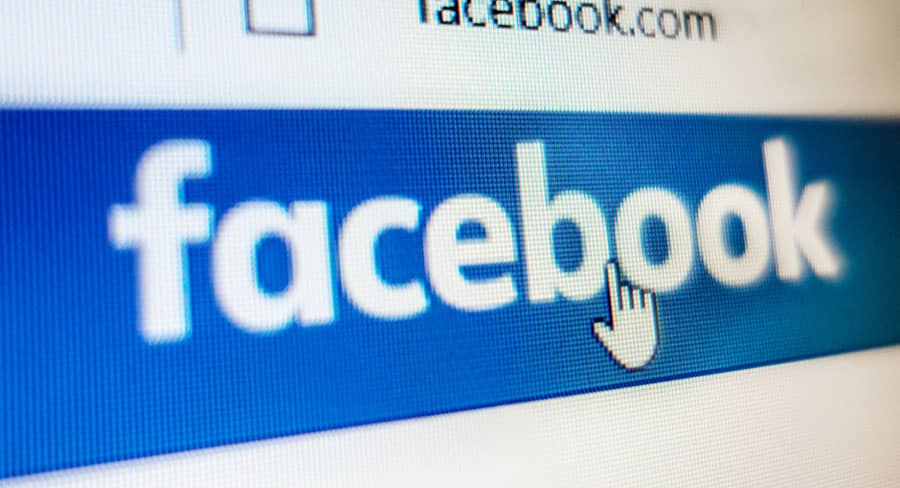
Treasurer Josh Frydenberg says Facebook will reverse news ban
Treasurer Josh Frydenberg has said that Facebook will reverse its ban on Australian news sites after the government and the tech giant reached an agreement.
“The government has been advised by Facebook that it intends to restore Australian news pages in the coming days,” Frydenberg said.
In a statement, he said the government would make further amendments to the news media bargaining code which was the catalyst for the news ban.
Facebook said in a statement that it was “satisfied” with the government’s changes.
“[We] appreciate the constructive discussions we’ve had with Treasurer Frydenberg and Minister Fletcher over the past week,” it said.
“After further discussions, we are satisfied that the Australian government has agreed to a number of changes and guarantees that address our core concerns about allowing commercial deals that recognise the value our platform provides to publishers relative to the value we receive from them.
“As a result of these changes, we can now work to further our investment in public interest journalism and restore news on Facebook for Australians in the coming days.”
In August 2020 Facebook threatened it would reluctantly stop allowing publishers and people in Australia to share local and international news on Facebook and Instagram if proposals to introduce the Media Bargaining law continued.
On February 18th, Will Eastman, managing director of Facebook Australia and New Zealand, explained that the threat was to become a reality as Facebook restricted publishers and people in Australia from sharing or viewing Australian and international news content.
Eastman explained: “The proposed law fundamentally misunderstands the relationship between our platform and publishers who use it to share news content. It has left us facing a stark choice: attempt to comply with a law that ignores the realities of this relationship, or stop allowing news content on our services in Australia. With a heavy heart, we are choosing the latter.”
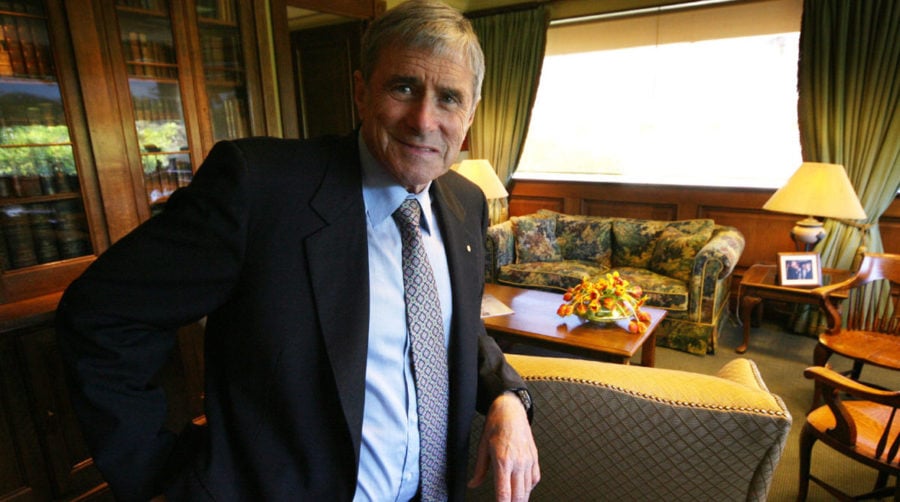
Seven West Media signs letter of intent to provide news to Facebook
Seven West Media today announced it has signed a Letter of Intent to provide news content to Facebook.
The LOI is subject to signing a long-form agreement between the two companies, expected to be executed over the following 60 days. Seven West Media will provide more details following the execution of the agreement.
Seven West Media Chairman Kerry Stokes AC (pictured) said: “The establishment of this new partnership with Facebook is a significant move for our business and reflects the value of our original news content across our successful metropolitan and regional broadcast, digital and print properties.
“On 15 February we announced a LOI for a partnership with Google, to provide news content to the Google Showcase product.
“Together, the two announcements are a strong recognition of the quality and credibility of our leading news brands and entertainment, and will enable us to continue to build our digital platform,” he said.
“These partnerships would not have been possible without the leadership and vision of Prime Minister Scott Morrison, the Chair of the Australian Competition and Consumer Commission, Rod Sims, Treasurer Josh Frydenberg and Communications Minister Paul Fletcher, and we thank them.”
Yesterday it was announced that Facebook and the government had reached an agreement to overturn the ban on Australian news content. Facebook said in a statement that it was “satisfied” with the government’s changes.
“[We] appreciate the constructive discussions we’ve had with Treasurer Frydenberg and Minister Fletcher over the past week,” it said.
“After further discussions, we are satisfied that the Australian government has agreed to a number of changes and guarantees that address our core concerns about allowing commercial deals that recognise the value our platform provides to publishers relative to the value we receive from them.
“As a result of these changes, we can now work to further our investment in public interest journalism and restore news on Facebook for Australians in the coming days.”
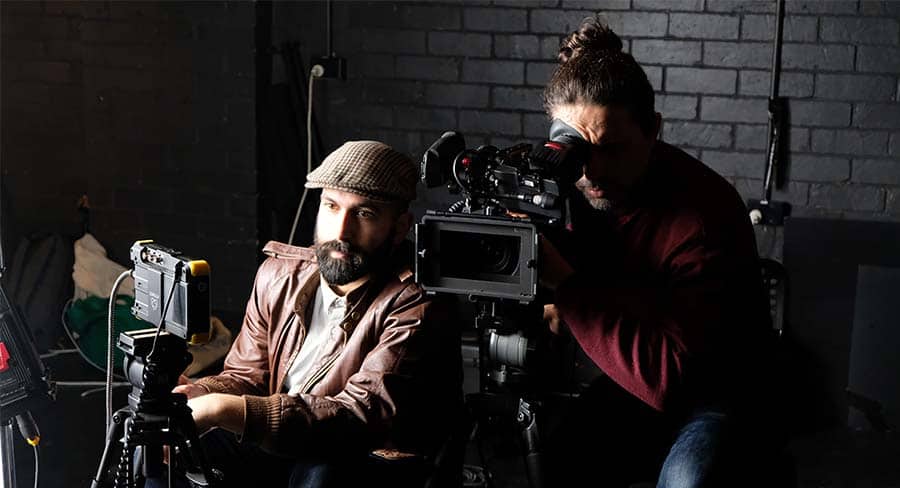
Screen Australia and Guardian Australian to fund two online documentaries
Two documentaries, JUVIE and Movement at the Station, will receive production funding from Guardian Australia and Screen Australia under their joint online documentary initiative.
The initiative allows Australian filmmakers to reach an international audience via one of the world’s leading English-language news sites, with the documentaries streaming for free on Guardian Australia’s website later in 2021.
Screen Australia’s head of documentary Bernadine Lim said, “We’re thrilled to fund these compelling and timely documentaries that are both driven by captivating characters. Charby Ibrahim is an exciting rising talent who brings his experience working in the juvenile justice system to offer insights into the lives of young people in JUVIE, and Movement at the Station will showcase Australia’s own ‘horse whisperer’ and the bond that can be achieved between horses and humans.”
Guardian Australia’s head of documentaries Lindsay Poulton said, “I’m delighted to be working with Screen Australia again on these new commissions. Both films, JUVIE and Movement at the Station, have talented filmmaking teams behind them, telling original stories with urgent contemporary themes. I’m excited to bring these films to our global audience.”
The Funded Projects Are:
JUVIE, focusing on young people with first-hand experience of the juvenile justice system. Bringing together animation, stylised interviews, and observational material, these stories will delve into much more than the apparent ‘criminal act’ itself, but also the life circumstances of the young person leading up to their arrest, the social context surrounding their behaviour, and their prospects on the outside after release. Director and producer Charby Ibrahim, whose short documentary Bright Lights launched on Guardian Australia last month, teams up with producer Britt Arthur (Paper Trails) and executive producer Jen Peedom (Mountain) on this project.
Movement at the Station, which follows New South Wales stockman Joe Hughes who rescues Australian brumbies and trains them using an unorthodox horse whispering technique. Hughes has become a practitioner of equine therapy, using the horses to help treat people living with a range of disorders including depression, addiction, and trauma. The creative team features writer, director, and producer Pete Ward, producer Lisa Shaunessy (2067, Killing Ground) and writer/producer Sam Emery.
Both films are between 25 and 30 minutes duration.
Previous Australian documentaries commissioned by Guardian Australia include Where The River Runs Red and Lost Rambos.
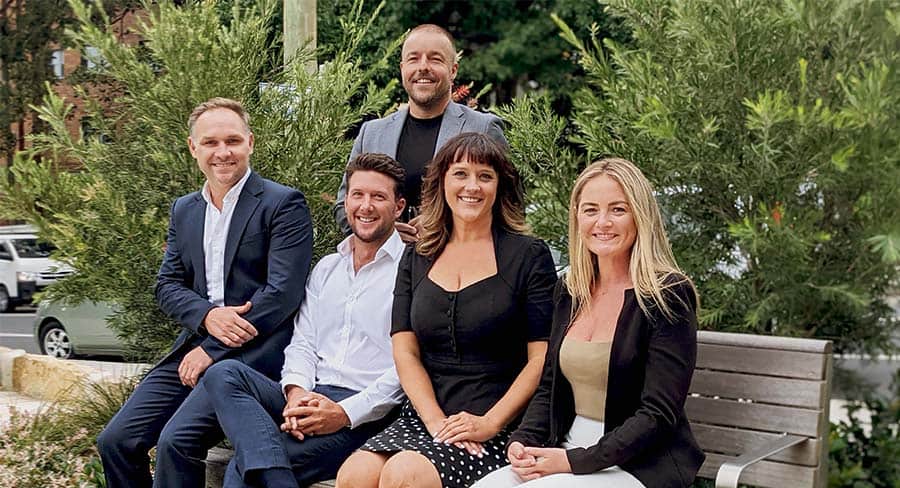
QMS announces expansion of its sales and product teams
QMS continues to expand its team with the promotion of senior sales leaders and the creation of Programmatic and IMPULSE General Managers to enhance client servicing and drive new revenue and market share growth.
In Sydney, Nicole Pennells, Elliot Devine and Claire Allison have been promoted to Group Business Directors. Both Pennells and Devine will lead group agency teams whilst Allison will head the Independent Agencies and Direct Sales team in market.
The Melbourne team will see Jess Zavecz, Alana Begbie, Tara O’Keefe, and Tim Stevenson also elevated to Group Business Directors with Zavecz, Begbie and O’Keefe spearheading the Group Agency teams and Stevenson leading the Victorian Independent Agencies and Direct Sales team.
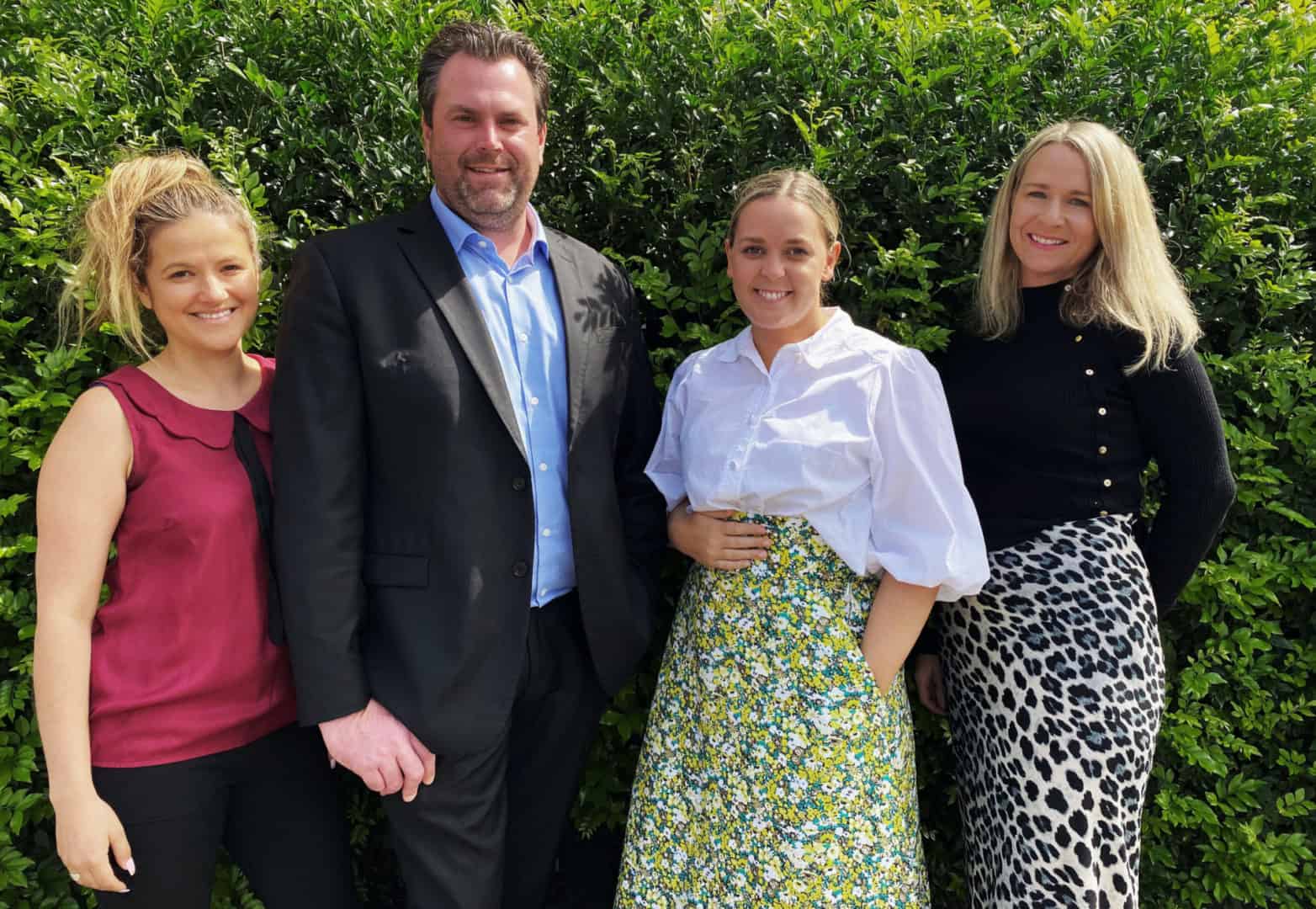
QMS’ Victorian sales team
QMS Chief Revenue Officer, Alex Kerley said the promotions will further enhance QMS’ market presence as it continues to implement its strategic growth initiatives.
He said: “With our current growth momentum and increased market demand, these new roles will further enhance our team’s ability to focus on quality customer service delivery and help our clients maximise the speed, flexibility, data and creative opportunities that exist for them when planning and buying digital out of home.
“Our team of Group Business Directors have been integral in helping to grow and shape QMS to where we sit today, and these promotions are a reflection of their hard work and dedication to excellence”, said Kerley.
Two brand new national product roles have also been created to provide a dedicated focus to delivering product innovation and incremental revenue opportunities across the business.
Experienced senior media and sales leader, David Sutherland has been promoted to General Manager – Large Format & Programmatic which will see him responsible for expanding QMS’ leadership in both Digital and Programmatic Out of Home (pDOOH). After a successful period of leading the Victorian Sales team, Andrew Robertson will return to Sydney as General Manager – IMPULSE, with a focus on expanding and further developing the revamped small format digital 7-Eleven network nationally.
QMS Chief Customer Officer, Mark Fairhurst said the elevation of Sutherland and Robertson was another major step forward in broadening the QMS team to support the strategic growth vision for the business nationally.
“David’s new role is crucial to the future vision we have for pDOOH as an enhancement to clients’ existing DOOH strategies. For the past two years, David has helped lead the charge on our pDOOH approach and his experience and understanding of the media, outdoor and programmatic sectors will allow QMS to help continue leading the industry into its promising programmatic future.
“I am also pleased to welcome Andrew back to the Sydney office where he will now have the exciting opportunity to lead our IMPULSE offering nationally. In just over six months, the demand for our re-invigorated 7-Eleven digital network continues to grow and we are pleased to have Andrew’s industry and product experience to help develop this offering even further.”
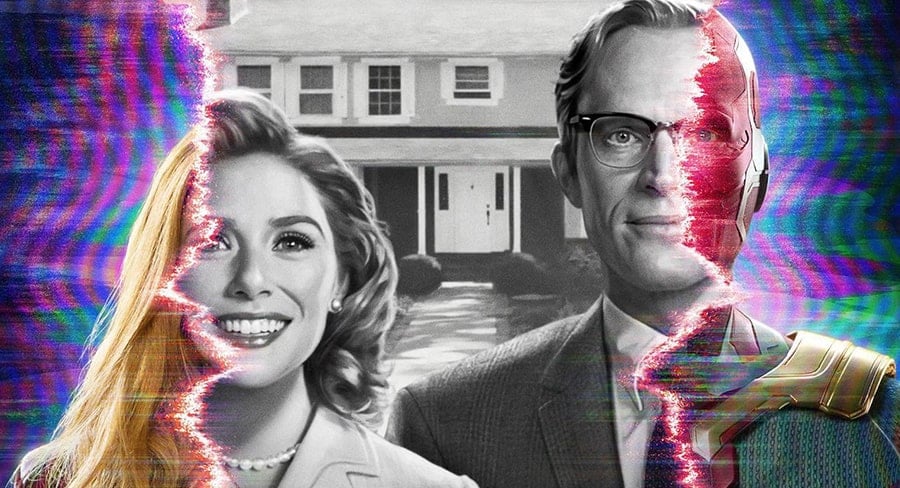
TV Demand: Disney+ holds the top two spots, but Netflix dominates the rest
WandaVision continues to enjoy its time at the top of the charts this week, with the seventh episode being released. There are only two more episodes left in the season (and the series). That won’t be the end of WandaVision however, with Marvel Studios’ Assembled due to release its first episode a week after the finale of WandaVision.
Assembled is a new documentary series that will be aired on Disney+, taking a behind-the-scenes look at the shows and films of the Marvel universe. The first documentary episode will focus on WandaVision, and will feature actors Elizabeth Olsen, Paul Bettany, Teyonah Parris, and Kathryn Hahn, plus the show’s creative team.
The Mandalorian continues to sit tight in its second-place spot as well this week, sitting 36.3 points above the market average overall. Whilst the pre-production of a third season may have helped keep The Mandalorian at the top end of the charts since its season finale aired in December, it’s also a testament to the immense popularity and staying power of the Star Wars franchise.
The next addition to the Star Wars universe, The Book of Boba Fett, is due for release in December this year.
Whilst Disney+ holds the first two positions comfortably on the Digital Originals charts, it’s also been a big week for Netflix. Cobra Kai did the best for Netflix, coming in at third, but the streaming platform also has The Crown in sixth, Stranger Things in seventh, Bridgerton in eighth, and Lucifer in ninth. With a total of five out of the ten spots going to Netflix shows, Disney+ may have the top spots but Netflix is dominating the charts.
The Crown and The Flight Attendant have stayed in the top ten digital originals, seeing a boost from their nominations in The Golden Globes. While The Crown held tight in its sixth position, The Flight Attendant dipped down a spot from ninth to tenth.
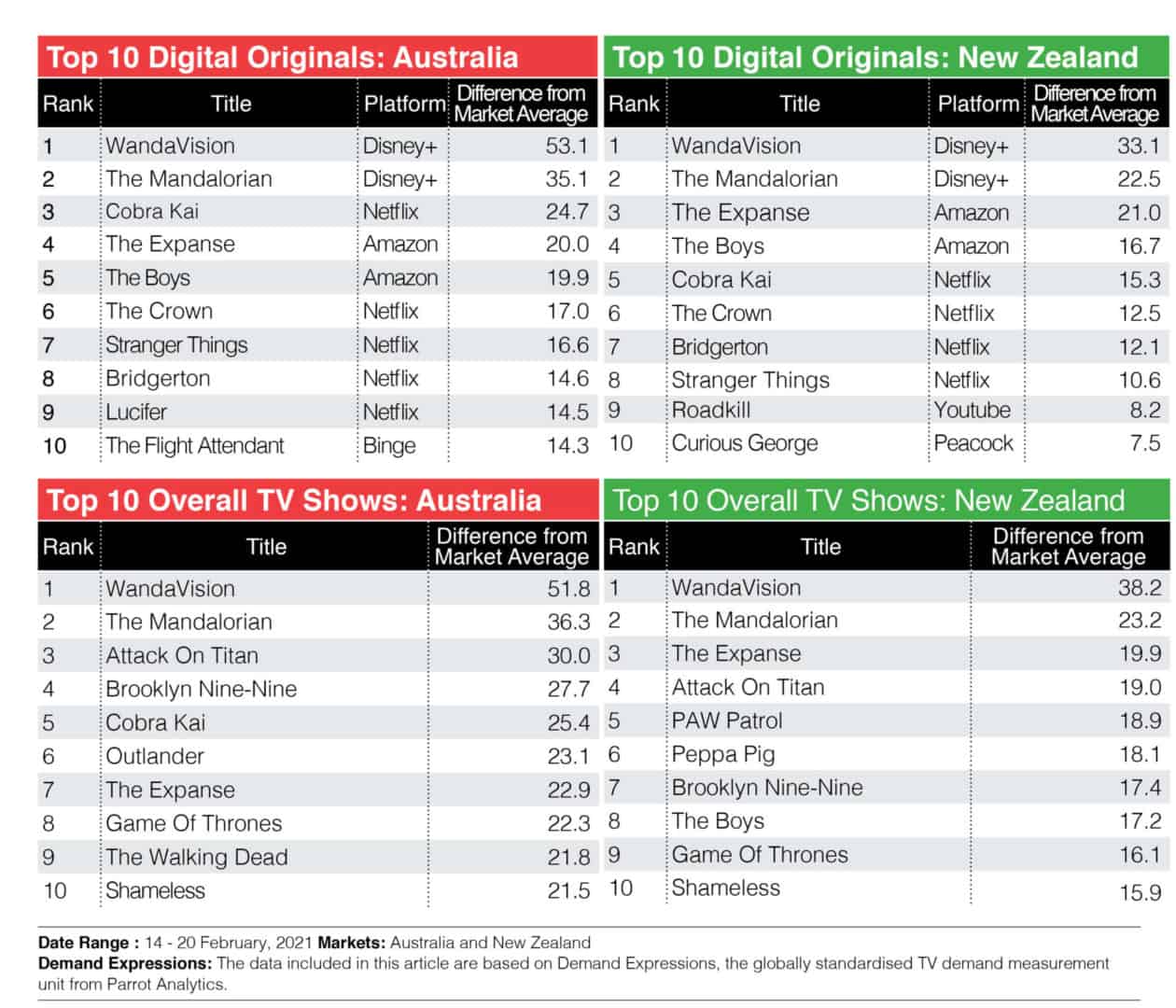
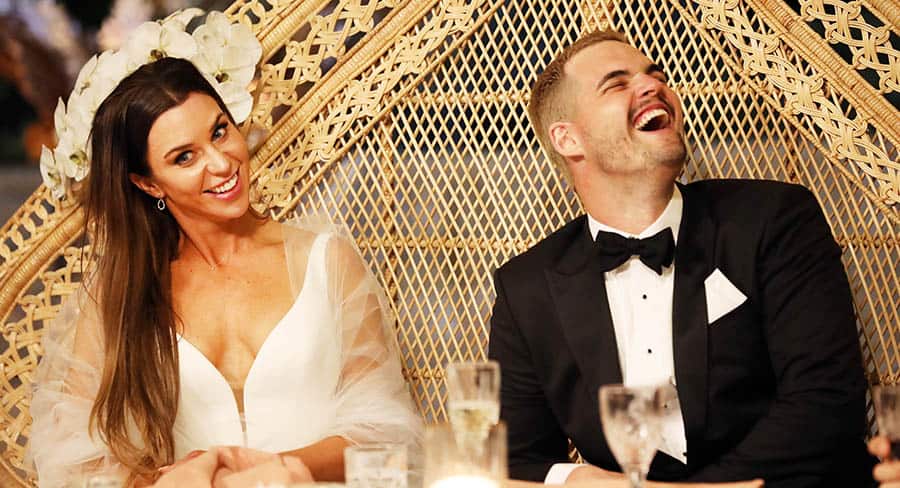
TV Ratings Survey: Tuesday Week 9
Primetime News
Seven News 902,000 (6 pm)/896,000 (6:30 pm)
Nine News is 871,000 (6 pm)/861,000 (6:30 pm)
ABC News 683,000
10 News First 306,000(5 pm)/210,000 (6pm)
SBS World News 176,000 (6:30 pm)/143,000 (7 pm)
Daily current affairs
A Current Affair 720,000
7:30 503,000
The Project 233,000 (6:30 pm)/415,000 (7 pm)
The Drum 179,000
Breakfast TV
Sunrise 262,000
Today 206,000
News Breakfast 196,000
Late Night News
The Latest 111,000
Nine News Late Edition 79,000
ABC Late News 88,000
World News Late 58,000
Nine has won its 16th night in a row thanks to the drawing power of Married at First Sight’s second episode. The broadcaster had a 26.6% primary share and a 34.9% network share, both more than 11 points clear of second spot. MAFS was also #1 in all key demos for the second night in a row.
MAFS had 992,000 tune in for the second night of wedding week which was up on the 964,000 the show had for its first episode on Monday night. The episode saw Booka and Brett, Samantha and Cameron plus Coco and Sam tie the knot.
MAFS was followed by Botched which had 386,000, and was #2 for the night in the 16-39 demo.
On Seven the top rating show was Home and Away with 460,000. In the 7:30 slot was a special episode of Highway Patrol that counted down the top 10 outrageous characters that had appeared on the show which had 303,000 viewers. The Good Doctor then followed at 8:30 with 294,000 which was slighting down on last week’s 300,000.
On 10 The Amazing Race Australia had 459,000 viewers which was down on last Tuesday’s 554,000.
The episode took the teams to Port Lincoln, South Australia, where The Dancing Exes, Jordan and Violeta, were eliminated from the Race.
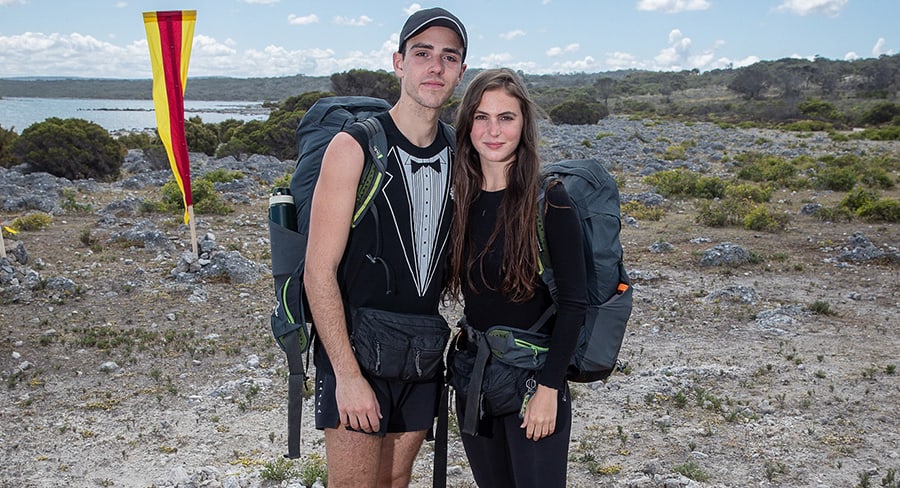
Jordan and Violeta
The Project had 233,000 and 415,000 tune in as the panel discussed how Jobseeker payments have finally been raised and spoke with comedian Celeste Barber.
On the ABC 7:30 also covered the changed job seeker payments and had 503,000 viewers, while Foreign Correspondent had 390,000 and Catalyst 303,000.
The top show on SBS was a repeat of Great Australian Railway Journeys with 234,000.
WeeK 9: Tuesday
| TUESDAY METRO | |||||||||
|---|---|---|---|---|---|---|---|---|---|
| ABC | Seven | Nine | 10 | SBS | |||||
| ABC | 11.5% | 7 | 14.8% | 9 | 26.6% | 10 | 11.3% | SBS One | 5.4% |
| ABC KIDS/ ABC TV PLUS | 2.0% | 7TWO | 3.5% | GO! | 3.0% | 10 Bold | 3.2% | VICELAND | 1.4% |
| ABC ME | 0.4% | 7mate | 3.0% | GEM | 2.3% | 10 Peach | 3.1% | Food Net | 1.0% |
| ABC NEWS | 1.7% | 7flix | 1.6% | 9Life | 1.7% | 10 Shake | 0.7% | NITV | 0.2% |
| 9Rush | 1.3% | SBS World Movies | 0.4% | ||||||
| TOTAL | 15.6% | 22.8% | 34.9% | 18.3% | 8.4% | ||||
| TUESDAY REGIONAL | |||||||||
|---|---|---|---|---|---|---|---|---|---|
| ABC | Seven Affiliates | Nine Affiliates | 10 Affiliates | SBS | |||||
| ABC | 10.6% | 7 | 18.7% | 9 | 19.6% | WIN | 9.6% | SBS One | 5.4% |
| ABC KIDS/ ABC TV PLUS | 2.2% | 7TWO | 4.5% | GO! | 2.0% | WIN Bold | 4.2% | VICELAND | 1.6% |
| ABC ME | 0.5% | 7mate | 6.8% | GEM | 3.5% | WIN Peach | 3.2% | Food Net | 0.7% |
| ABC NEWS | 1.4% | 7flix (Excl. Tas/WA) | 1.5% | 9Life | 2.1% | Sky News on WIN | 1.5% | NITV | 0.2% |
| SBS Movies | 0.4% | ||||||||
| TOTAL | 14.7% | 31.6% | 27.2% | 18.6% | 8.3% | ||||
| TUESDAY METRO ALL TV | |||||||||
|---|---|---|---|---|---|---|---|---|---|
| FTA | STV | ||||||||
| 88.1% | 11.9.% | ||||||||
Tuesday FTA
- Married At First Sight Nine 992,000
- Seven News Seven 902,000
- Seven News At 6.30 Seven 896,000
- Nine News Nine 871,000
- Nine News 6:30 Nine 861,000
- A Current Affair Nine 720,000
- ABC News ABC TV 683,000
- 7.30 ABC TV 503,000
- Home And Away Seven 460,000
- The Amazing Race Australia 10 459,000
- The Chase Australia Seven 457,000
- The Project 7pm 10 415,000
- Foreign Correspondent ABC TV 390,000
- Botched Nine 386,000
- Hot Seat Nine 360,000
- 10 News First 10 306,000
- Highway Patrol Special Seven 303,000
- Catalyst ABC TV 303,000
- The Good Doctor Seven 294,000
- The Chase Australia-5pm Seven 276,000
Demo Top Five
16-39 Top Five
- Married At First Sight Nine 261,000
- Botched Nine 109,000
- The Amazing Race Australia 10 106,000
- Nine News 6:30 Nine 105,000
- Nine News Nine 98,000
18-49 Top Five
- Married At First Sight Nine 461,000
- Nine News Nine 198,000
- Nine News 6:30 Nine 195,000
- The Amazing Race Australia 10 189,000
- Botched Nine 180,000
25-54 Top Five
- Married At First Sight Nine 496,000
- Nine News Nine 260,000
- Nine News 6:30 Nine 247,000
- The Amazing Race Australia 10 219,000
- Seven News At 6.30 Seven 215,000
Tuesday Multichannel
- Bluey ABC Kids/ABC TV Plus 140,000
- Bluey ABC Kids/ABC TV Plus 134,000
- Ben And Holly’s Little Kingdom ABC Kids/ABC TV Plus 128,000
- NCIS Ep 2 (R) 10 Bold 123,000
- Brave Bunnies ABC Kids/ABC TV Plus 117,000
- Neighbours 10 Peach 113,000
- Peppa Pig ABC Kids/ABC TV Plus 110,000
- New Tricks 9Gem 110,000
- Kiri And Lou ABC Kids/ABC TV Plus 107,000
- Inspector George Gently 7TWO 106,000
- Peppa Pig ABC Kids/ABC TV Plus 105,000
- Kangaroo Beach ABC Kids/ABC TV Plus 102,000
- Safe House 9GO! 100,000
- Peter Rabbit ABC Kids/ABC TV Plus 98,000
- Outback Opal Hunters 7mate 94,000
- Fireman Sam ABC Kids/ABC TV Plus 93,000
- Play School ABC Kids/ABC TV Plus 93,000
- The Big Bang Theory Ep 3 (R) 10 Peach 93,000
- Outback Opal Hunters (R) 7mate 92,000
- The Big Bang Theory Ep 2 (R) 10 Peach 90,000
Tuesday STV
- Paul Murray Live Sky News Live 87,000
- Big Shots: Anti-Vaxxers Exposed Sky News Live 71,000
- The Bolt Report Sky News Live 70,000
- Credlin Sky News Live 69,000
- The Kenny Report Sky News Live 44,000
- PML Later Sky News Live 43,000
- Paw Patrol Nick Jr. 34,000
- NCIS FOX Crime 32,000
- Afternoon Agenda Sky News Live 31,000
- Paw Patrol Nick Jr. 30,000
- Afternoon Agenda Sky News Live 30,000
- Santiago Of The Seas Nick Jr. 28,000
- Top Wing Nick Jr. 28,000
- Abby Hatcher Nick Jr. 28,000
- Blaze And The Monster Machines Nick Jr. 27,000
- Paw Patrol Nick Jr. 27,000
- Santiago Of The Seas Nick Jr. 26,000
- The Great Kiwi Bake Off Lifestyle FOOD 26,000
- NCIS FOX Crime 26,000
- Escape To The Country Lifestyle Channel 26,000
Shares all people, 6pm-midnight, Overnight (Live and AsLive), Audience numbers FTA metro, Sub TV national
Source: OzTAM and Regional TAM 2021. The Data may not be reproduced, published or communicated (electronically or in hard copy) without the prior written consent of OzTAM
Media News Roundup
Media Code
Microsoft, European media look to Australian publisher payment model
The move by the Seattle-based company is one of its most brazen yet to align with the press industry, exploit the difficulties of its Silicon Valley rivals and promote its own search engine Bing as a copyright-friendly alternative for news.
The project announced on Monday (Tuesday AEDT) will involve Microsoft working with Europe’s four leading lobby groups for news publishers to develop a legal solution to “mandate payments” for the use of content by “gatekeepers that have dominant market power”.
Facebook’s capitulation in Australia is the beginning of the project to regulate Big Tech – not the end
Over the past few days Australians have gotten a flavour of what a global tech power will do to avoid regulation.
Now we are getting an idea of what a world-class capitulation looks like after Facebook agreed to re-friend Australia after securing what appears to be technical changes to legislation it had been determined to skewer.
News Brands
What do viewers want from current affairs show 7.30? It’s complex
Last week, when Victoria’s sudden five-day COVID-19 lockdown unexpectedly stranded her in Melbourne during a private visit, Sales attended the daily press conference of the state’s premier, Daniel Andrews. The back and forth over the subject of why Victoria was in hiatus and what it signified between the politician and the journalist was strident but not combative, yet before the live telecast was even finished, Sales was the subject of much online criticism (and some praise).
It was an illustrative questioning, and it was noteworthy that 7.30′s edit fairly gave Andrews the time to make his case. What drove the snap judgments of Sales to a sizeable degree was the partisanship of those watching, whether on a political or home state level, which is a change in the public discourse that has basically been accelerating for the past decade. That trend of taking sides – which is anathema to the ABC’s standing – roughly matches Sales’ tenure at 7.30, following the departure of Kerry O’Brien, and you could make the case that few prominent journalists feel the impact more.
Waleed Aly cut off by The Project producers in COVID vaccine rant
Waleed Aly was cut off by producers in the middle of a discussion with co-host Rachel Corbett about the vaccine.
During a segment highlighting the percentage of Australians willing to get the vaccine, with some incredibly unwilling, Aly and Corbett got into a debate about how far the “no jab no play” idea would go.
Television
Schapelle Corby is revealed to be a ‘wildcard contestant’ on Dancing with the Stars
Corby, who was convicted on drug smuggling in Indonesia, appeared on SAS: Australia for Seven last year.
After lasting just two episodes, she will now frock up for Seven’s dancing revival, with a mix of former stars and new ‘wildcards.’
TV Tonight also hears whispers the following personalities are set to appear:
• Luke Jacobz: actor / presenter, Winner Season 8
• Lincoln Lewis: actor 5th Place Season 9
• Bec Hewitt: actor, Winner Season 1.
• Renee Bargh: presenter (DWTS backstage host USA)
• Erin McNaught, already leaked by the Daily Telegraph, is also taking to the dance floor.
Eureka to produce Frogger for major USA network
Production will take place in Sydney in May on a huge purpose-built obstacle course, to screen on NBC-owned Peacock streaming service.
Audiences and contestants alike will be transported into a wild, whimsical Frogger world, comprising twelve outrageous obstacle courses or “crossings.” Physically-demanding challenges will see contestants dodge treacherous traffic, leap over snapping gators and hop over hungry hippos to conquer the course.
13 hour-long episodes have been ordered with contestants to include US expats based in Australia.
Sport
Seven dealt blow in TV stoush with Cricket Australia
Seven had asked for a $70 million reduction from its annual $82 million cash and contra deal to cover the game but a binding independent assessment found the network can recoup just $5 million, according to a source familiar with the matter.
The network will be hoping it can claw back more money when the final determination is due to be delivered next week by Venture Consulting chief executive Justin Jameson, the man agreed by the warring parties to provide an independent ruling.

